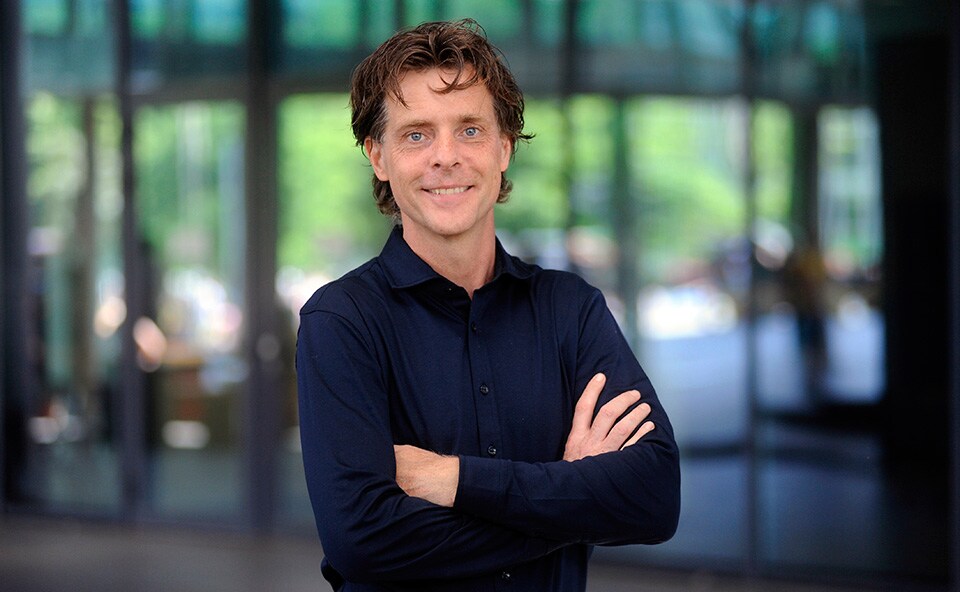For English see below
Op de TU/e (Technische Universiteit Eindhoven) werken ‘scalpels’ (medici) en ‘schroevendraaiers’ (techneuten) al jarenlang samen. Volgens Dekker werkt dat zo goed, omdat ze elkaars taal spreken en ze tegen vergelijkbare uitdagingen aanlopen. Het grootste obstakel daarbij is het omgaan met de gigantische hoeveelheid data en het gebruik hiervan in de praktijk. Nieuwe technologieën maken het makkelijker om de patiënt centraal te stellen, vertelt Dekker aan de Hartstichting. “We weten al jaren dat ‘voorkomen beter is dan genezen’, en toch worden dokters nog steeds betaald om te behandelen, niet om behandeling te voorkomen. Met moderne data-analyse kunnen we echt inzetten op de toekomst.” Maar hij stelt ook dat zowel patiënten en artsen moeten wennen aan de mogelijkheden en voorzichtig moeten zijn. Tegelijkertijd moeten de ontwikkelingen echter niet worden vertraagd, aldus Dekker. Maar hoe zorg je daarvoor?
Betere oplossingen
Volgens Dekker moeten medici en ingenieurs de samenwerking zoeken en van elkaar leren. De ouderwetse reactie op een probleem, bijvoorbeeld overlijden na een grote ingreep, is verpleegkundigen nog meer ronden laten maken. Nog meer meten en nog meer registreren. Ingenieurs hebben hier soms betere oplossingen voor. Andersom moeten technologen leren dat het om de patiënt gaat en niet om het ontwikkelen zelf. e/MTIC, het Eindhoven MedTech Innovation Centre, speelt een centrale rol bij de samenwerking die Dekker voor ogen heeft. Dit is de samenwerking tussen TU/e, Philips, Máxima Medisch Centrum, Catharina Ziekenhuis en Expertisecentrum Kempenhaeghe. Dit moet leiden tot meer technische vernieuwing in de gezondheidszorg. Binnen het consortium zijn zo'n honderd TU/e promovendi aan het werk samen met een vergelijkbaar aantal experts en wetenschappers van TU/e, de ziekenhuizen en Philips. De afgelopen 15 jaar werkten de partijen al bilateraal samen in projecten met verschillende focusgebieden. De partners verwachten dat de intensieve samenwerking tussen kliniek, -wetenschap en industrie de ontwikkeltijd van research tot resultaat voor de patiënt aanmerkelijk verkort.

Heart Foundation interviews professor and cardiologist Lukas Dekker: 'Eindhoven has a long tradition of cooperation between doctors and technicians'
At TU/e, 'scalpels' (doctors) and 'screwdrivers' (technicians) have been working together for years. According to Dekker, this works so well because they speak each other's language and face similar challenges. The biggest obstacle is dealing with the gigantic amount of data and its use in practice. New technologies make it easier to focus on the patient, says Dekker to the Heart Foundation. "We have known for years that 'prevention is better than cure', and yet doctors are still paid to treat, not to prevent treatment. With modern data analysis, we can really focus on the future." But he also argues that both patients and doctors have to get used to the possibilities and have to be careful. At the same time, however, developments should not be slowed down, says Dekker. But how do you do that?
Better solutions
According to Dekker, doctors and engineers should seek cooperation and learn from each other. The old-fashioned response to a problem, such as death after a major operation, has been to have nurses make even more rounds. Measure more and register even more. Engineers sometimes have better solutions for this. Conversely, technologists have to learn that it is about the patient and not about the technical development itself. e/MTIC, the Eindhoven MedTech Innovation Centre, plays a central role in the collaboration that Dekker has in mind. This is the cooperation between TU Eindhoven, Philips, Máxima Medical Center, Catharina Hospital and the Kempenhaeghe Expertise Center should lead to more technical innovation in healthcare. Around a hundred TU/e PhD students are working within the consortium, together with a comparable number of experts and scientists from TU/e, the hospitals and Philips. Over the last 15 years, the parties have already worked bilaterally on projects with different focus areas. The partners expect that the intensive collaboration between clinic, science and industry will significantly shorten the development time from research to result for the patient.












